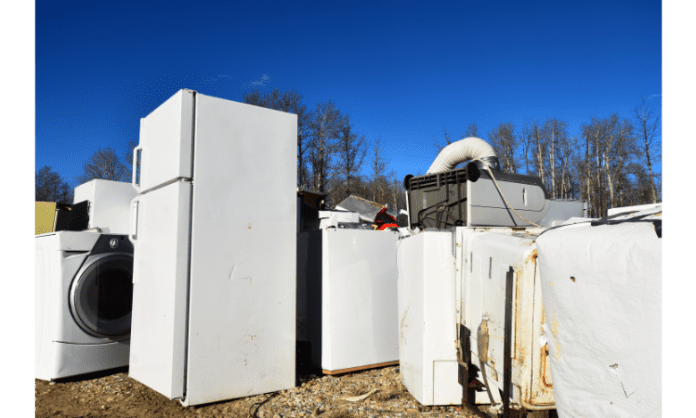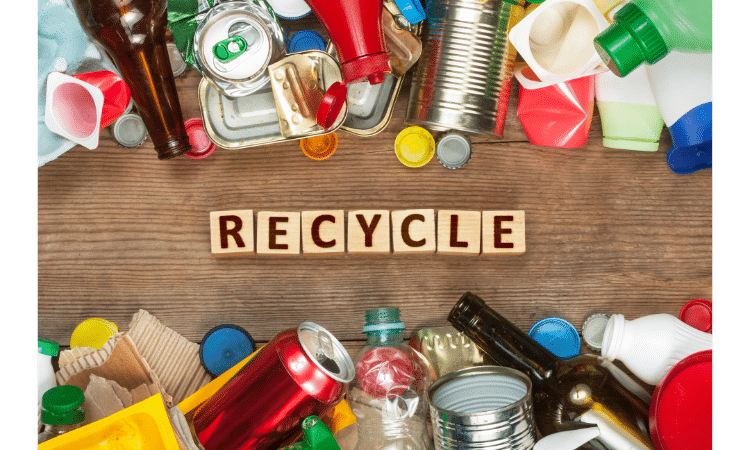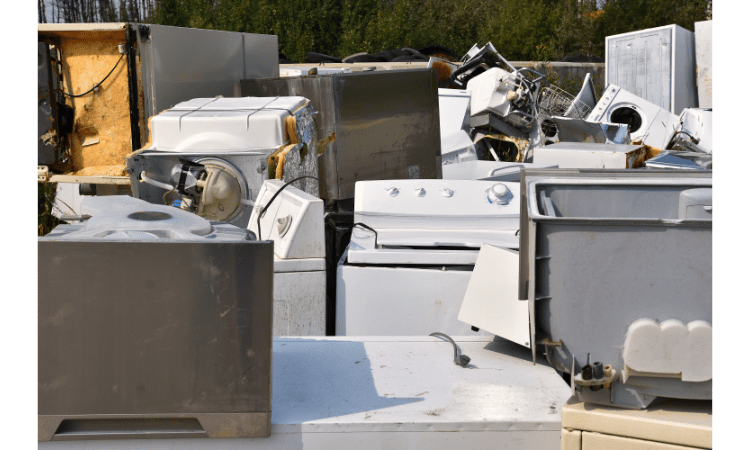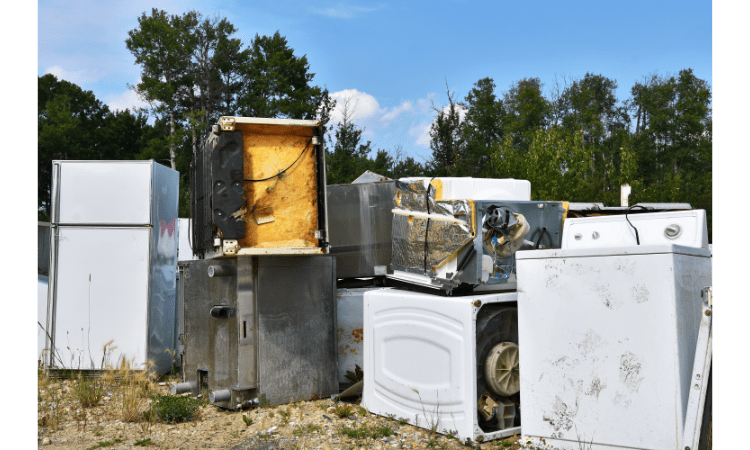
Many appliances in our homes are used for more than 20 years. This means that the devices we own can be considered one of our most valuable assets to us. However, it is also critical to keep them functional and efficient over time or they may start breaking down at a younger age than they should. When an appliance breaks down, you might have to replace it with a new one but there are also ways you can recycle them as well if they still have some life left in them.
What is Recycle?

Recycling is the process of recovering materials from the waste stream and using them to make new products, often without any changes in material composition or form. What you might not know is that recycling is a very important part of our everyday lives. When you replace an old appliance, you’re helping to reduce pollution in our air and water by preventing it from going into landfills or incinerators.
As a general rule of thumb, if your item contains any metal parts, such as copper wiring or steel brackets on devices (such as microwaves), then it’s probably safe to assume that these items can be recycled. But if your item has plastic parts—such as the casing on a blender—then it may not qualify for curbside pickup at certain recycling facilities because they don’t have enough capacity at their facilities to handle all types of recyclable materials at once.
What are Recycle old Appliances?

Recycling appliances is a process by which you can dispose of old and worn-out appliances that are no longer in use. The process entails taking apart the appliance and separating the different parts into categories such as plastics, metals, and other components. These parts can then be used to manufacture new appliances or other products.
It is good to know that there are many benefits of recycling your old devices rather than throwing them away or selling them as scrap metal because it will help reduce pollution and conserve natural resources. Additionally, this activity helps create jobs in various industries such as manufacturing plants and construction sites where they are needed most.
Why should we recycle old appliances?

- Reduce waste: Appliances that are thrown away end up in landfills. Their presence there can contaminate the air and leach into the soil, causing environmental pollution.
- Reduce pollution: When appliances are replaced or repurposed, they can be reused to create new products like furniture or art pieces that will last longer than disposable ones do. This is beneficial because it reduces emissions associated with manufacturing and shipping new products.
- Save energy: Recycling old devices means you’ll use less electricity to power them since they’re already broken down into their basic components (and therefore lighter). You’ll also save money by not buying new devices every time something breaks down—you can just fix whatever’s wrong with your current model instead.
- Save money: Since recycling saves so much energy, it helps keep costs low for everyone involved with production processes at companies like Samsung Electronics America Inc., which produces high-end electronics without breaking any bank accounts open too far apart from its own budget.
How to prepare appliances for recycling?
When you’re ready to replace an appliance, whether it’s a couch or a refrigerator, there are several things you’ll want to do before handing it off.
- First, remove all cords and cables from the appliance. This is particularly important for electronics like computers or televisions because they may contain lead or mercury (more on that later). It also helps prevent injury when handling heavier items like refrigerators or freezers.
- Next, we suggest removing any batteries or accessories that may be in your appliance—like remote controls and power cords—because these items can cause harm if they come into contact with other recyclables at the facility where your appliances are processed.
- Next, make sure all food has been removed from any appliances being replaced; this includes food residue left behind by messy snack-eaters as well as any liquids spilled inside the appliance during use (such as water). If there is any food present it may attract rodents and insects, which could pose a safety risk at the recycling facility, so always give yourself peace of mind by making sure nothing edible remains inside before dropping off your devices.
Tips to Replace old Appliances
Use retailer recycling options

If you’re not sure how to recycle your appliances, use the retailer recycling options. Retailer recycling is a system where you can bring in your old appliances and they’ll take care of everything for you. You don’t have to worry about taking it apart or finding a place to drop it off.
When you bring in an appliance to be recycled at a retailer, make sure that it’s empty and clean so they can properly replace it:
- Take out the bags and filters inside the dryer or clothes washer—just make sure there are no coins or keys left inside.
- Remove all screws from any furniture pieces so they can be deconstructed easily by technicians at the retail location.
Retailers also offer different types of services for their customers’ convenience (and for their own benefit!). Some stores will even give you cash back if your appliance has certain parts that still work well enough when recycled (like vacuum motors).
Sell for scrap

If you want to recycle your old appliances, but can’t figure out how to get rid of them, there are some options. One possibility is selling your old appliance for scrap. Because scrap metal prices are high right now, this might be a good idea if you have an older or uncommon model that is in working condition. In addition to helping offset the cost of recycling and keeping it simple for you, selling your old appliance also reduces its environmental impact by avoiding landfill waste and using less energy in transportation than having it picked up at your house.
The Environmental Protection Agency (EPA) recommends that consumers check with local junkyards before attempting to sell their own appliances directly—junkyards might not accept certain models or working conditions may make them unusable for scrap recycling purposes.
Donate a working appliance

Replace appliances by donating them to a person in need, a charity or non-profit organization, a school, a nursing home, a homeless shelter, or another organization that could use the appliance. If you have an old refrigerator or freezer you can donate it to your local food bank. A working stove can be donated to a family who may not have one. A working washer and dryer set will help someone who cannot afford one of their own. Appliances that are less than five years old should be able to be used again by someone else as long as they are cleaned well before being given away.
If there is no such organization in your area then consider selling them through Craigslist or eBay; this way you can get some money back from these appliances instead of just throwing them away (unless they are broken).
Check for manufacturer recycling programs

A manufacturer recycling program is a great way to get rid of an old appliance. The company that made your appliance may be willing to take it back and recycle it for free or at a reduced price, which can help save you money. Some manufacturers will pay for your old appliances, so check the official website for the company that made yours. If there’s no sign of a manufacturer recycling program on its website, try searching online for other sources that could offer more information about whether or not they have such programs in place (like local governments). If a local government doesn’t have any info on what they’re doing with unwanted appliances, call them up directly and ask them how they handle these kinds of situations.
Professional recycling centers

If you want to replace an appliance, it’s important to find a certified recycling center. Certified recyclers are certified by the EPA (Environmental Protection Agency), or an authorized state agency, to handle specific types of appliances. You can find a list of these recyclers on the EPA website. Also, check with the manufacturer of your appliance; they may have information about where their products can be recycled.
Conclusion
The next time you are ready to get rid of an old appliance, consider whether it can be recycled. Appliances that can be recycled include refrigerators, freezers, and dishwashers. Many of these appliances contain harmful chemicals such as mercury or lead that need to be disposed of properly so they don’t end up in landfills or waterways where they could harm wildlife and humans.











